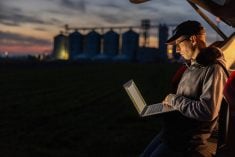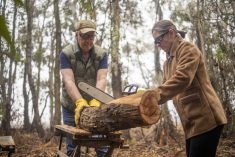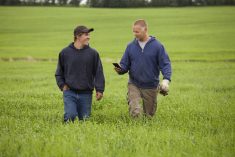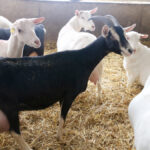Rob, who is 65, and Sarah, who is 61, farm six quarters of grain and pasture in northwestern Manitoba. They have two sons, Michael and Steven, each in his 30s and married. However, Steven, who has a town job, has decided he would like to try his hand at farming.
The issue in devising a retirement plan and estate plan is fairness. To that end, Rob and Sarah approached Nathan Heppner and Erik Forbes, both experienced financial planners with Forbes Wealth Management in Carberry, Man., to determine how to make the family inheritance a viable business for everyone.
Read Also

Gentle treatments for pain in the neck
Heading toward year-end, people unknowingly tense up against the cold and busyness, causing neck pain that can often be treated with appropriate support and gentle mobility, athletic therapist Kathlyn Hossack says.
The parents have $290,000 in financial assets and expect another $180,000 when they sell their inventory from this year’s harvest. The plan has to provide a base retirement income of $60,000 per year, or $5,000 per month after tax. Based on projections with an assumed 2.1 per cent long term inflation rate and a 6.5 per cent annual return from investments, a $4,775 monthly income to age 100 would be achievable on top of CPP and OAS, currently $8,492 per person at age 65, Forbes estimates. There is already a shortfall of $1,125 per month for sustainable after-tax spending to Sarah’s age 100, Heppner explains. However, Rob and Sarah are averse to risk and want to take no chances of loss in stocks. They prefer low-return but secure insured GICs.
The couple’s farm has an estimated value of $2,250 per acre in pasture and cultivated land. Thus, the remaining five quarters have an estimated value of $1.8 million. Sale to a third party is not an option for Rob and Sarah. They want to preserve the land for both sons. They can’t ask them to go into debt to buy out the farm or any large part of it. The solution, Heppner says, is to create a workout that could vary from payments to the parents of $21,000 per year, assuming a 6.5 per cent return for 25 years, or $66,000 per year for a 3.5 per cent assumed return for 10 years.
Steven and his wife need $5,000 per month over and above payment of any debt obligations. When they move to the farm, they will have a $150,000 mortgage. Steven’s wife brings home $50,000 per year from an off-farm job. Based on her income, the couple’s assets and allowing for living costs, Forbes estimates the couple will need at least $24,000 per year from the farm. The problem becomes one of dividing the farm to create needed cash flow for Steven and maintaining fairness for everyone.
Steven would have equity he could use to expand the farm. Ron and Sarah could pass down three quarters to Steven. Michael does not plan to be an active farmer but wants to build a house on one quarter. If the land rents for just $110 per acre, it will generate $52,800 per year of which two-thirds or $35,200 per year would go to the parents for their retirement income for the 25-year buyout. Together with estimated future Old Age Security payments starting at 65 for Sarah, on top of OAS Rob already receives, and modest estimated combined Canada Pension Plan payments of about $370 per month, the parents would be able to meet their $60,000 annual goal, Heppner estimates.
To ensure a marital issue would not impair the plan, Rob and Sarah should take back a zero per cent interest promissory note on the three quarters of land that would go to Steven. If Steven were to find himself in financial or marital difficulties, Rob and Sarah’s interests would have to be settled first. And when Rob and Sarah die, their wills could specify that the remaining two quarters of land or an equal sum in cash would go directly to Michael. On the parents’ death, Steven would already have received three quarters of land, and Michael would have received only one. That would allow Steven to buy the land, while maintaining financial security for the family and providing retirement income for Rob and Sarah, Forbes explains.
“This is a workable plan for a couple with modest income, modest goals and an aversion to investments with any risk of loss,” Heppner concludes.















